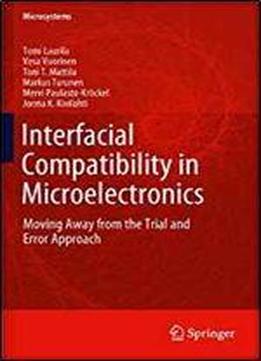
Interfacial Compatibility In Microelectronics: Moving Away From The Trial And Error Approach (microsystems)
by Tomi Laurila /
2012 / English / PDF
5.6 MB Download
Interfaces between dissimilar materials are met everywhere in microelectronics and microsystems. In order to ensure faultless operation of these highly sophisticated structures, it is mandatory to have fundamental understanding of materials and their interactions in the system. In this difficult task, the “traditional” method of trial and error is not feasible anymore it takes too much time and repeated efforts. In Interfacial Compatibility in Microelectronics, an alternative approach is introduced.
In this revised method four fundamental disciplines are combined: i) thermodynamics of materials ii) reaction kinetics iii) theory of microstructures and iv) stress and strain analysis. The advantages of the method are illustrated in Interfacial Compatibility in Microelectronics which includes:
solutions to several common reliability issues in microsystem technology,
methods to understand and predict failure mechanisms at interfaces between dissimilar materials and
an approach to DFR based on deep understanding in materials science, rather than on the use of mechanistic tools, such as FMEA.
Interfacial Compatibility in Microelectronics provides a clear and methodical resource for graduates and postgraduates alike











